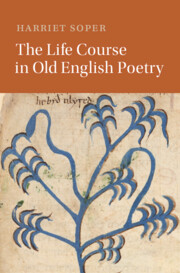102 results
2 - The Nurturing State: An Intimate Portrait of Becoming a Taxpayer in Ghana
-
-
- Book:
- Anthropology and Tax
- Published online:
- 12 December 2024
- Print publication:
- 19 December 2024, pp 73-94
-
- Chapter
-
- You have access
- Open access
- HTML
- Export citation
Chapter 4 - Developmental Perspectives on Understanding and Responding to Mental Health Impacts of Climate Change on Young People
- from Part I - Conceptual Foundations of Climate Distress in Young People
-
-
- Book:
- Climate Change and Youth Mental Health
- Published online:
- 06 June 2024
- Print publication:
- 13 June 2024, pp 70-92
-
- Chapter
- Export citation
Depressive symptoms in adolescence and adult educational and employment outcomes: a structured life course analysis
-
- Journal:
- Psychological Medicine / Volume 54 / Issue 11 / August 2024
- Published online by Cambridge University Press:
- 31 May 2024, pp. 3007-3014
-
- Article
-
- You have access
- Open access
- HTML
- Export citation
Homelessness Transitions, Risks, and Prevention Across the Life Course
-
- Journal:
- Social Policy and Society , First View
- Published online by Cambridge University Press:
- 31 May 2024, pp. 1-16
-
- Article
-
- You have access
- Open access
- HTML
- Export citation
Team science competencies across the career life course for translational science teams
-
- Journal:
- Journal of Clinical and Translational Science / Volume 8 / Issue 1 / 2024
- Published online by Cambridge University Press:
- 08 March 2024, e111
-
- Article
-
- You have access
- Open access
- HTML
- Export citation
The developmental origins of health and disease and intergenerational inheritance: a scoping review of multigenerational cohort studies
-
- Journal:
- Journal of Developmental Origins of Health and Disease / Volume 15 / 2024
- Published online by Cambridge University Press:
- 07 March 2024, e1
-
- Article
-
- You have access
- HTML
- Export citation
Long chain n-3 polyunsaturated fatty acid intake across the life span for cardiovascular disease prevention in women
-
- Journal:
- Proceedings of the Nutrition Society , First View
- Published online by Cambridge University Press:
- 06 March 2024, pp. 1-12
-
- Article
-
- You have access
- Open access
- HTML
- Export citation
Adverse childhood experiences and unhealthy dietary behaviours in adulthood
-
- Journal:
- Public Health Nutrition / Volume 27 / Issue 1 / 2024
- Published online by Cambridge University Press:
- 18 January 2024, e40
-
- Article
-
- You have access
- Open access
- HTML
- Export citation
Chapter 4 - Getting Wasted
-
- Book:
- The Life Course in Old English Poetry
- Published online:
- 29 November 2023
- Print publication:
- 07 December 2023, pp 137-173
-
- Chapter
- Export citation
Introduction - The Poetics of the Life Course
-
- Book:
- The Life Course in Old English Poetry
- Published online:
- 29 November 2023
- Print publication:
- 07 December 2023, pp 1-24
-
- Chapter
- Export citation
Chapter 1 - Taking Shape
-
- Book:
- The Life Course in Old English Poetry
- Published online:
- 29 November 2023
- Print publication:
- 07 December 2023, pp 25-60
-
- Chapter
- Export citation
Chapter 3 - Outliving Others
-
- Book:
- The Life Course in Old English Poetry
- Published online:
- 29 November 2023
- Print publication:
- 07 December 2023, pp 99-136
-
- Chapter
- Export citation
Chapter 2 - Becoming Useful
-
- Book:
- The Life Course in Old English Poetry
- Published online:
- 29 November 2023
- Print publication:
- 07 December 2023, pp 61-98
-
- Chapter
- Export citation
Conclusion - The Rhyming Poem
-
- Book:
- The Life Course in Old English Poetry
- Published online:
- 29 November 2023
- Print publication:
- 07 December 2023, pp 174-190
-
- Chapter
- Export citation

The Life Course in Old English Poetry
-
- Published online:
- 29 November 2023
- Print publication:
- 07 December 2023
Food insecurity is inversely associated with positive childhood experiences among a nationally representative sample of children aged 0–17 years in the USA
-
- Journal:
- Public Health Nutrition / Volume 26 / Issue 11 / November 2023
- Published online by Cambridge University Press:
- 07 August 2023, pp. 2355-2365
-
- Article
-
- You have access
- Open access
- HTML
- Export citation
Social isolation from childhood to mid-adulthood: is there an association with older brain age?
-
- Journal:
- Psychological Medicine / Volume 53 / Issue 16 / December 2023
- Published online by Cambridge University Press:
- 24 July 2023, pp. 7874-7882
-
- Article
-
- You have access
- Open access
- HTML
- Export citation
17 - Longitudinal Research: A World to Explore
- from Part III - Data Collection
-
-
- Book:
- The Cambridge Handbook of Research Methods and Statistics for the Social and Behavioral Sciences
- Published online:
- 25 May 2023
- Print publication:
- 08 June 2023, pp 357-377
-
- Chapter
- Export citation
9 - Neighborhood Decisions and Interactions
-
- Book:
- The Love Jones Cohort
- Published online:
- 02 February 2023
- Print publication:
- 09 February 2023, pp 132-144
-
- Chapter
- Export citation
Precarious work and precarious workers: Towards an improved conceptualisation
-
- Journal:
- The Economic and Labour Relations Review / Volume 27 / Issue 3 / September 2016
- Published online by Cambridge University Press:
- 01 January 2023, pp. 314-332
-
- Article
- Export citation

